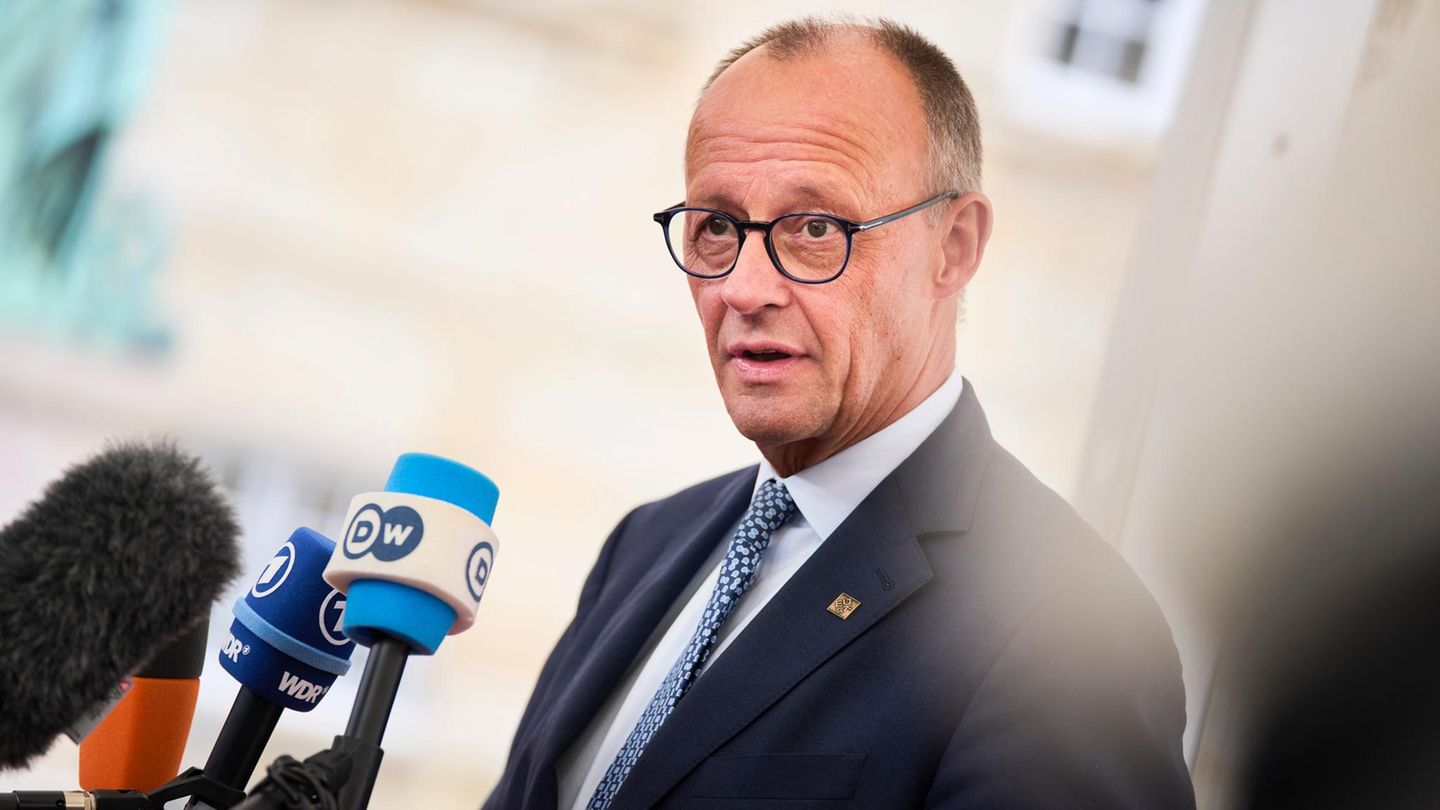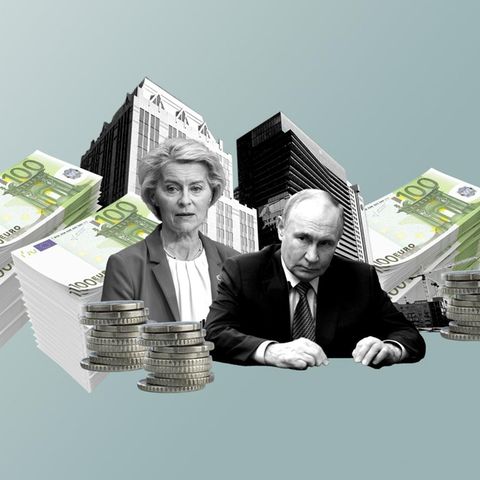Informal EU summit
And then it’s about drones again
Copy the current link
Add to the memorial list
Chancellor Friedrich Merz is at the heart at the EU meeting in Copenhagen: the reduction in bureaucracy and the frozen Russian assets. Another overlaps everything.
Example combustion. Friedrich Merz also wants to discuss this in the circle of the EU heads of state and government. He wants to grind the rule, this and many other regulations and prohibitions: “It’s just too much.” The regulatory density must be “fundamentally corrected”.
Strong sentences that stir up great expectations – in this respect the statement of the Chancellor at the end of the cabinet exam was a typical Merz in front of Villa Borsig. “Basically correct”-said it, climbed from the podium and flew to Copenhagen to the informal EU summit.
To abolish all these bureaucratic rules? At least to talk about it? Of all people in Copenhagen?
There has been no other topic in Copenhagen for days: drones
Sure, Merz spoke his big issue on the narrow statement after the right of way at the Castle of Christiansborg: “the competitiveness of European industry and the high, too high level of regulation in Europe “.
But in the Danish capital there has been no other topic for days than this: drones. Dozens of unmanned flight objects had paralyzed traffic at the airport and had flown through critical infrastructure. The police and army looked powerless, the public was horrified.
And so it turned out a little differently. And Merz could have known. But the Chancellor wanted to deposit this point here and today with the EU drivers.
Thousands of officials were ordered to the capital to protect the more than 40 states of state who came to Denmark for the EU’s meeting and the European Community. The Americans have sent anti-drone technology, the Ukrainians experienced drone specialists. France, Poland and the Nordic neighbors also help. And before Copenhagen, the German air defense frigate “Hamburg” is on duty. Their radar is able to record over 1000 flight objects at the same time.
In such a protected space, it should be less about bureaucracy than two other major topics: the further support of Ukraine and the improved EU. As for Ukraine aid, Merz himself recently made a proposal in the “Financial Times” how to proceed with those 200 billion Russian assets that are frozen in Brussels. In short: he now wants to use it, at least indirectly for EU bonds.
So far, Germany has also been one of those countries that, like Belgium, warned to caution in this question. Belgium fears to be sued by Russia, Germany (previously) for the reputation of the financial center Europe, France (still) (still) for its high debt ratio. But since the Europeans have realized that the US President will really not send any more money towards Kiev, there has been movement in the excruciating debate. Decisions can still be expected in Brussels at the end of the next official summit at the end of October.
This also applies to the second conference point of view, the improved defense ability. On the table there was a discussion paper from the Commission President Ursula von der Leyen. The focus here: drones, more precisely a whole “drone wall”.
In order to intercept large swarms of Russian flight objects at the EU’s outer border, a system of anti-aircraft guns, rockets and drones is to be developed. The idea originally comes from Estonia, now it is at the top of the list of common defense projects, which, according to the will, should also be financed by the Leyens.
Russia currently provides events in a weekly rhythm. Even when Putin let his cheap drones fly into the airspace of Poland and Romania, NATO had no choice but to leave fighter jets and shoot them down with expensive rockets. That gave many to think.
It is all the more painful to realize that a few drones are sufficient to paralyze half a country
The invasion of Ukraine had just had to get used to the horrors of a conventional war again: with tanks and Haubitzen. This war in Ukraine has long been dominated by drones, also the hybrid war that Russia leads to the West.
A debate is now raging in Denmark. As in almost all EU countries, national defense had been neglected for years and now has to be retrofitted hectically. “Buy, buy, buy”, the Danish Prime Minister Mette Frederiksen issued as a motto in spring. And you bought: tanks and fighter jets. It is all the more painful to realize that a few drones are sufficient to paralyze half a country.
Are we running again in the wrong direction? The Danish head of government has to ask itself this question. Sooner or later it may also reach the federal government.
It went on the offensive on its own. Interior Minister Alexander Dobrindt Has announced to strengthen the drone defense. In order to better prepare Germany against the “new hybrid danger”, he wants to regulate who is responsible for law. On the edge of the cabinet exam, he explained the Dobrindt triple jump from “tracking down, intercepting and fending off”, whereby the warding off “should also also include shooting”.
To this end, the CSU politician wants to set up a “common drone defense center”, where the hazard situation is also analyzed and countermeasures are initiated. It is not always clear whether it is espionage, an attack or just a stray private drone.
Finally you saw drones, presumably for espionage purposes, in the greater Kiel area. You have scanned a power plant, a military shipyard and even the CDU man Daniel Günther’s state chancellery.
So the thing hurries. Or like the new Army Inspector of the Bundeswehr, Christian Freuding, wrote in the daily command: “The enemy does not wait for our ‘finished’ message.” A sentence that Friedrich Merz would certainly sign.
The Ukrainian President Wolodymir Selksyj in Copenhagen is also expected on Thursday. Merz will have further discussions with counterparts. And what about reducing bureaucracy? “We now have to keep the stick in the wheels in Brussels in Brussels so that it stops,” Merz recently said in Cologne. In three weeks at the official EU summit in Brussels, he can get the stick again.
Source: Stern
I have been working in the news industry for over 6 years, first as a reporter and now as an editor. I have covered politics extensively, and my work has appeared in major newspapers and online news outlets around the world. In addition to my writing, I also contribute regularly to 24 Hours World.





